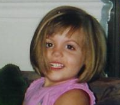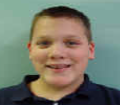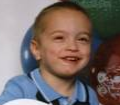Testimonial
Raigan, Austistic girl, improves with hyperbaric therapy

Raigan, Austistic girl, improves with hyperbaric therapy
Summary of the testimonial
My youngest daughter, Raigan, was diagnosed with autism when she was 23 months of age. After hearing this diagnosis, I cried for days. I wanted to hear that she had an infection or a medical condition that was curable, get a prescription from the doctor, and in ten days she’d be all better. Instead, I heard that dreaded word, “Autism,” that made me cringe. Hearing your child has autism is not what any parent wants to hear and in the beginning, there can be more questions than answers. There is still so much that doctors and therapists don’t know. The question, “What can I do to help my child have some semblance of a normal life?” becomes the topic of everyday thought and conversation.
Raigan turned 3 in November 2006. She currently has no usable language - Raigan lost her words after receiving her 18-month vaccinations. And, in regards to what I believe may have caused Raigan’s autism – there are two main contributing factors. First, I believe Raigan received vaccinations when her body was too weak to process them. And secondly, the constant need for antibiotics due to recurring ear infections which began at one month of age. The overuse of antibiotics can damage the gut lining which may lead to malabsorption of nutrients, yeast overgrowth, and other negative side effects. Vaccines aren’t a bad thing, they have a great purpose, but “one size does NOT fit all.” A child who is consistently sick is at risk of a reaction. If you have a child who is consistently ill, wait until your child’s immune system is stronger. Point: Healthy child = healthy response. Sick child = sick response.
The best advice for parents to follow in regards to vaccinations is READ. Don’t take a shot in the dark. Study what precautions can be taken to minimize the risk of reactions to vaccinations which include, but are not limited to: Educate yourself before your child is vaccinated; only vaccinate a healthy child that is free of antibiotics (It takes approximately 2 months for a person’s body to rid itself of antibiotics); request single dose vials - they contain less to no preservatives which may be harmful to the body; if you have a child who is consistently sick, delay giving him/her vaccinations until his/her body and immune system is stronger (a child’s immune system is not fully developed until age three); and last, remember that too much of a good thing is not a good thing – meaning, break them up – don’t allow your pediatrician to give too many vaccinations at one time, especially if your child is not feeling up to par. Allow your child to be given no more than 2 to 3 vaccinations in one visit and come back at a later date if more are needed. If your pediatrician doesn’t want to delay, but you believe it’s in the best interest of your child to delay vaccinations, always go with your gut instinct and find a new pediatrician – one who listens and responds to your concerns. Never be afraid to put your foot down when it comes to the well-being and health of your child because no one knows your child better than you do – believe that.
Parents - I encourage you to read all that you can. There is help out there and the diagnosis of Autism is no longer a death sentence. If your child has been diagnosed with Autism Spectrum Disorder (ASD), there are many things you can do to help your child, but it takes research, patience and perseverance. Go online, search the web, find the right pediatrician (one who’s willing to go the distance, not one who says “Nothing can be done”), go to the bookstore for resources, then begin to put into practice what you learn. From a gluten free/casein free diet, to the right vitamin supplements and minerals, to cod liver oil, to chelation – there are so many things now available to help recover our precious children. And, often, it’s not just one of these, but rather, a combination of many of these things accompanied with physical, occupational, speech, mild hyperbaric oxygen therapy, and/or music therapy that often makes the most difference with ASD children.
Earlier this year, you could call Raigan’s name all day long and never get her attention. She looked through us, not at us. Her muscle tone was very weak (sometimes a symptom of autism and, ironically, a symptom of mercury-poisoning as well). She had had many ear infections beginning very early in life - a common denominator among many autistic children. About 75% of autistic children suffered from chronic ear infections during infancy and early-childhood. And, I felt Raigan had serious allergy problems, but we didn’t know how or what to eliminate from her environment or from her diet for which she was reacting. There were days when she would scratch at her eyes, face and head so intensely, I feared she would physically hurt herself. I had visited more than one allergist with the only outcome being high doses of allergy medications, yet I was given no answers as to what was causing her allergy symptoms.
In February 2006, we switched to a gluten free/casein free (GF/CF) diet. And, a warning to parents, you can transfer to this diet gradually to minimize withdrawals. I’ve talked to several parents who said they stopped the diet because their child actually regressed. Unfortunately, these children were not experiencing regression, they were experiencing withdrawals from gluten and casein which to our child’s bodies is a drug. Most autistic children cannot break down and properly digest gluten (found in wheat, barley, oat & rye) and casein (milk & dairy). These products can cause an opium-like affect on the brain of autistic children making them feel foggy and leaving them unable to concentrate or focus. A parent has to fully commit to this diet and give it time. It can take as much as 6 to 9 months for the body to rid itself of gluten and only about 3 days to purge casein. We went full speed ahead with the diet and Raigan experienced horrible withdrawal symptoms for close to 2 months, but when the fog lifted – wow! – She saw us for the first time in months. I cannot tell you how awesome it was to have my child look AT me again and recognize me – it still brings tears to my eyes. Also, prior to the diet change, Raigan’s stools were loose to wet - always. Within 3 days of the diet change, her stools were more normal, her ability to focus improved daily, and her constant runny nose stopped constantly running. Gluten and casein intolerance as well as other food sensitivities can cause diarrhea, constipation, both or neither, as well as skin conditions like eczema and changes in behavior. Point: It’s worth researching food sensitivities.
Unfortunately, there has been no one therapy or dietary intervention that has given us that miracle cure. Like most autistic children, improvements have come from the use of many interventions - the GF/CF diet, specific vitamin and mineral supplements, and a variety of therapies mentioned above accompanied with education from special schools that are trained to teach autistic children using Applied Behavior Analysis (ABA) or other teaching techniques known to be successful in these children. It’s finding the right doctor – preferably a DAN! (Defeat Autism Now!) Doctor who will inform you, guide you, and run the appropriate tests on your child to give you specific answers about the underlying health of your child and how to improve his or her health (a child who is physically ill whether they appear to be or not, doesn’t feel much like learning, participating or focusing).
In March of 2006, after the initial consultation with our DAN! Doctor, Dr. Julie A. Buckley of Pediatric Partners of Ponte Vedra, we got the results from a 90-food sensitivity test to discover that Raigan had multiple food allergies. Expanding on the GF/CF diet, we eliminated those additional foods from her diet and, yet again, she showed improvement. In regards to the GF/CF diet and other food allergies, the most informative and helpful book I have read is Special Diets for Special Kids written by Lisa Lewis, Ph.D. If you have a child with food allergies, I believe this book is a must-read. This book not only has recipes to help you get started, but information on hidden ingredients, yeast and bacteria in the stomach that can be a major problem for autistic children, and so much more.
After the diet change and the introduction of several vitamin and mineral supplements, Raigan’s progress began to level off. We began mild hyperbaric oxygen therapy in April 2006 with positive results. After one visit in the hyperbaric chamber, Raigan stared directly at me as we left the clinic that day and smiled at me in a way that I hadn’t seen her smile in months. As we walked to our car, I choked back tears feeling a renewed hope in my heart – I was slowly getting my daughter back. Oxygen therapy helped Raigan’s focus tremendously as well as her sleep patterns which had been horrible (often sleeping only 2 to 4 hours a night, no naps). In late June 2006, we began chelation (detoxification of heavy metals) in hopes of seeing continued improvement in the months and years to come. Besides a modified diet, oxygen therapy, chelation treatments, and supplements, we’ve had Raigan in a variety of other therapies offered by the our state’s Early Steps Program including physical, speech, occupational and early intervention therapy. Everything has contributed to Raigan’s improvement. She has come a long way in a short time because we started intervention early and strictly adhered to the advice of our DAN! Doctor.


